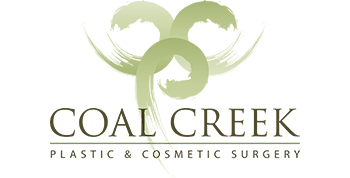Breast augmentation continues to be one of the most popular cosmetic surgery procedures in United States, with 286,254 procedures performed in 2015. That’s an increase of 35% from the year 2000.
When it comes to breast enhancement, patients often feel confused or overwhelmed when selecting an implant or researching different surgical techniques. The final result of any breast augmentation procedure is determined by a series of choices that the patient (with the counsel of their surgeon) will make.
Here are the five main factors to consider regarding breast augmentation:
- Size
Breast implant size is one of the most important characteristics that determine the end result of a breast augmentation procedure. Breast implant size is measured in cc’s, typically from 200cc to 600cc. Implant size choices usually come down to a combination of the patient’s anatomy and the degree of naturalness of the desired final result.
Many women want an enhanced appearance without the look of being overly (unnaturally) large. To achieve this result it’s very important for an experienced plastic surgeon to educate the patient on how each implant size will alter their unique physique. One of the best ways to accomplish this is for the patient to try on different implant sizers and see how each size will look. Additionally, patients should ask to view various before and after images of previous augmentation patients with a similar body frame.
- Silicone vs. Saline
The second big decision regarding implants is the choice between saline or silicone implants. Saline implants are filled with sterile saline (saltwater) which are filled by the surgeon after placement. This is convenient as it allows your surgeon to set the implants to get the exact desired outcome of the patient. Additionally, the incision necessary for placement is slightly smaller compared to what’s necessary for silicone implants.
Silicone implants are made with a silicone gel that is designed to closely mimic the feel of human fat. Although there is no hard scientific data, silicone is thought to have a more natural appearance and feel. Unlike saline implants, silicone breast implants are placed in the body fully filled. Silicone implants are typically about $1,000 more than saline versions.
More recently, a newer implant option has become available in the United States – the ‘gummy bear’ implant. Gummy bear implants (known medically as form-stable, or cohesive-gel implants) are filled with thicker silicone than traditional silicone implants. They are designed to mimic the natural slope and shape of the breast. The thicker silicone filling, which is similar to that of the popular gummy bear candy, allows the implant to maintain this natural shape. The incisions required for these implants are substantially larger than those required for traditional silicone or saline implants. Additionally, the outcomes can feel more firm than comparable sized smooth round implants.
- Surgical Incision
There are four unique types of incisions: trans-axillary, inframammary, areolar and trans-umbilical breast augmentation (otherwise known as TUBA). Periareolar and inframammary are the two most common incisions and most surgeons are well versed in these two types. In the periareolar incision, the surgeon makes an incision near the lower half of the areola, which in turn hides the scar. This type of incision can have an optimal outcome when combined with the breast lift or mastopexy. These are often preferable in patients with poorly defined inframammary folds or in those prone to hypertrophic scarring (thick raised scars).
When performing an inframammary incision, the surgeon creates an incision in the crease under the breast, allowing the surgeon maximum access when placing the implants. This type of incision is ideal for silicone implants as it better exposes the breast tissue-pectoralis muscle interface. It is the most commonly performed approach in the Unites States and is best suited for patients with well-formed inframammary folds who have a history of favorable scarring.
Both the TUBA and trans-axillary incisions are far less common. In the trans-axillary incision, the surgeon creates a small incision in the armpit, also dissecting a tunnel to place the implant in. This kind of technique creates no scar on the breast but it does cause more of a likelihood of inferior asymmetry of the implants. In the TUBA incision the surgeon makes an incision in the naval area, dissecting a tunnel upwards towards the breast area. In these two types of incisions, the empty saline implant is then rolled up much like a cigar and led through the dissected tunnel to be placed within the breast. At that point, the implant is then filled to the pre-determined amount.
If the implant is placed deep to the pectoralis major muscle, the anatomic contour of the “cleavage” tends to be more sloped, or “natural” (again depending on the woman’s anatomy and the size of implant chosen). It is best to discuss with your surgeon, the outcome you are seeking, and inquire whether the implant should be placed on top of or deep to the pectoralis major muscle.
- Surface
Women can choose between breast implants with a smooth surface or textured surface:
- Smooth implants have a higher chance of moving in the pocket (displacement) compared to textured implants.
- Smooth implants tend to have a slightly lower rupture rate and last longer.
- Textured implants have a thicker shell than smooth implants, generally making textured implants feel firmer.
- Textured implants were designed to minimize capsular contracture (however, studies vary on capsular contracture prevention).
- When the implants are placed in the submuscular space, the rate of capsular contracture tends to be the same with both smooth and textured implants.
- Shape
There are two types of shape options for breast implants: round or anatomical.
Round Breast Implants
Round breast implants have a symmetrical round shape. The round shape is beneficial as there is no malformation of breast shape should the implant move within the pocket. Round breast implants come in both textured and smooth surfaces and they tend to be less costly than anatomical implants.
A common misconception about round shaped implants is that they tend to look unnatural once implanted. This is not true: round implants can look just as natural as the anatomical type and vice versa. When a rounded implant is in the vertical position, they take on the same shape as an anatomical implant (which has been proven via radiographic imaging). As always, the final result of your augmentation will be dependent on factors such as your anatomy, the experience level of your plastic surgeon, and the technique used to place the implant.
Anatomical Breast Implants / Contoured Breast Implants
Anatomical breast implants were initially designed for the purpose of breast reconstruction. However, they have begun making their way into the world of cosmetic augmentation. Anatomical breast implants may look oval shaped when viewed from the front. When viewed from the side they appear to have more volume at the bottom, giving the implant a “bottom heavy” appearance since there is more volume at the bottom than the top.
One risk of anatomical shaped implants is that if they shift in position, an asymmetry can occur. To minimize displacement, anatomical implants feature a textured surface which allows for tissue adherence; helping to keep the implant in the proper position. If you are considering an anatomical shape, it is important to choose a plastic surgeon that has experience in anatomical implant placement as the pocket must be precisely created.
Original Article Available Here



